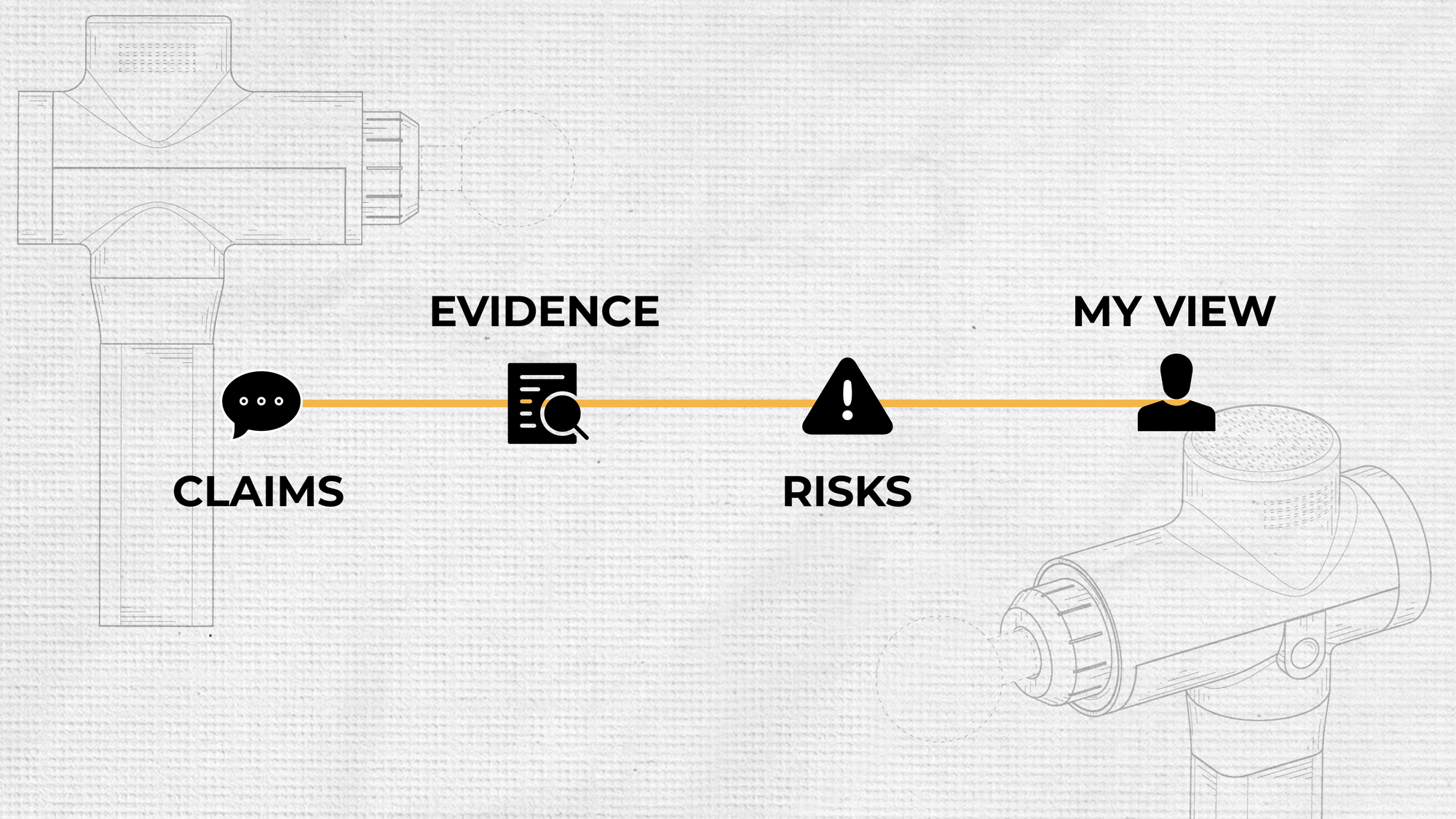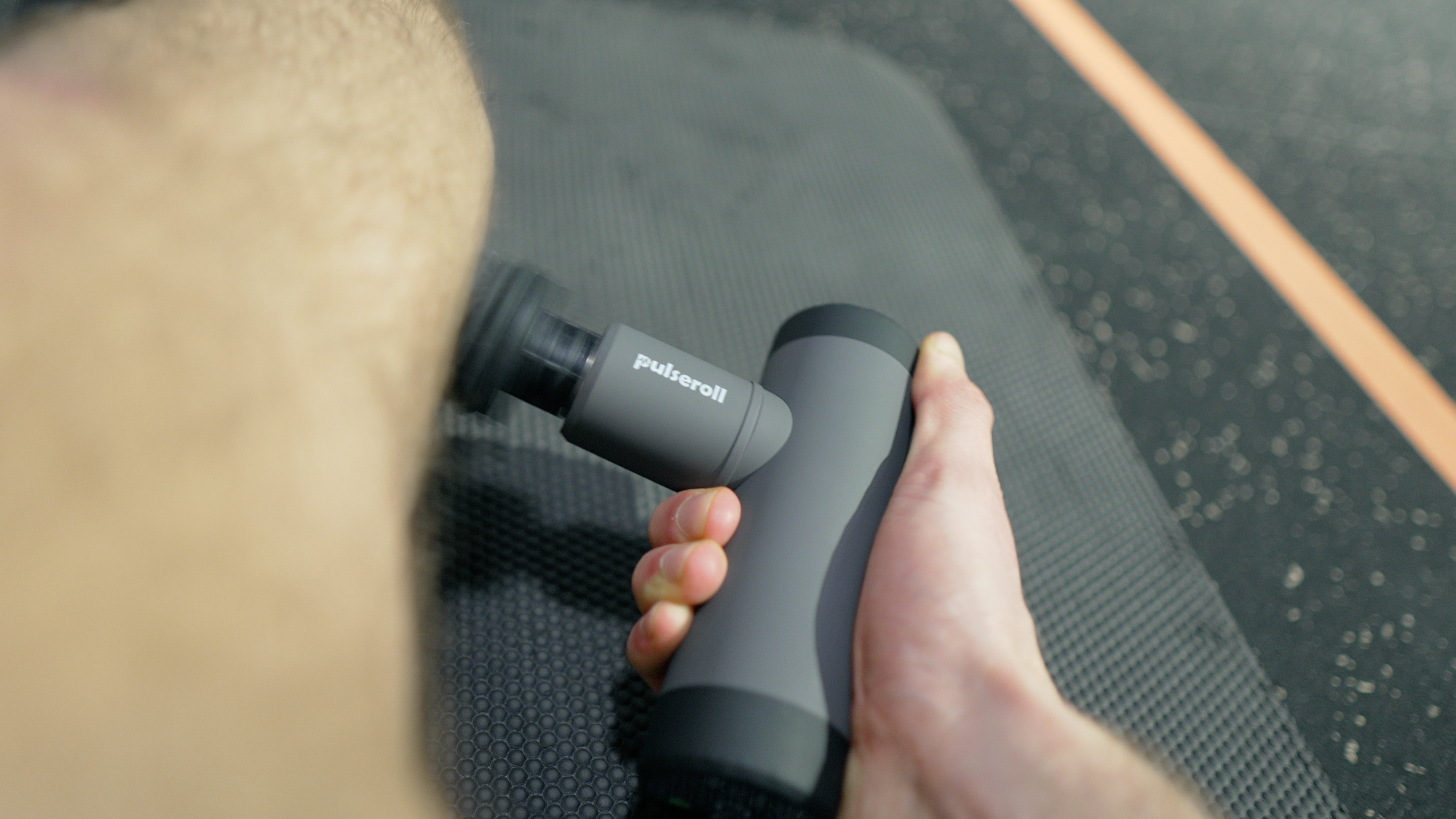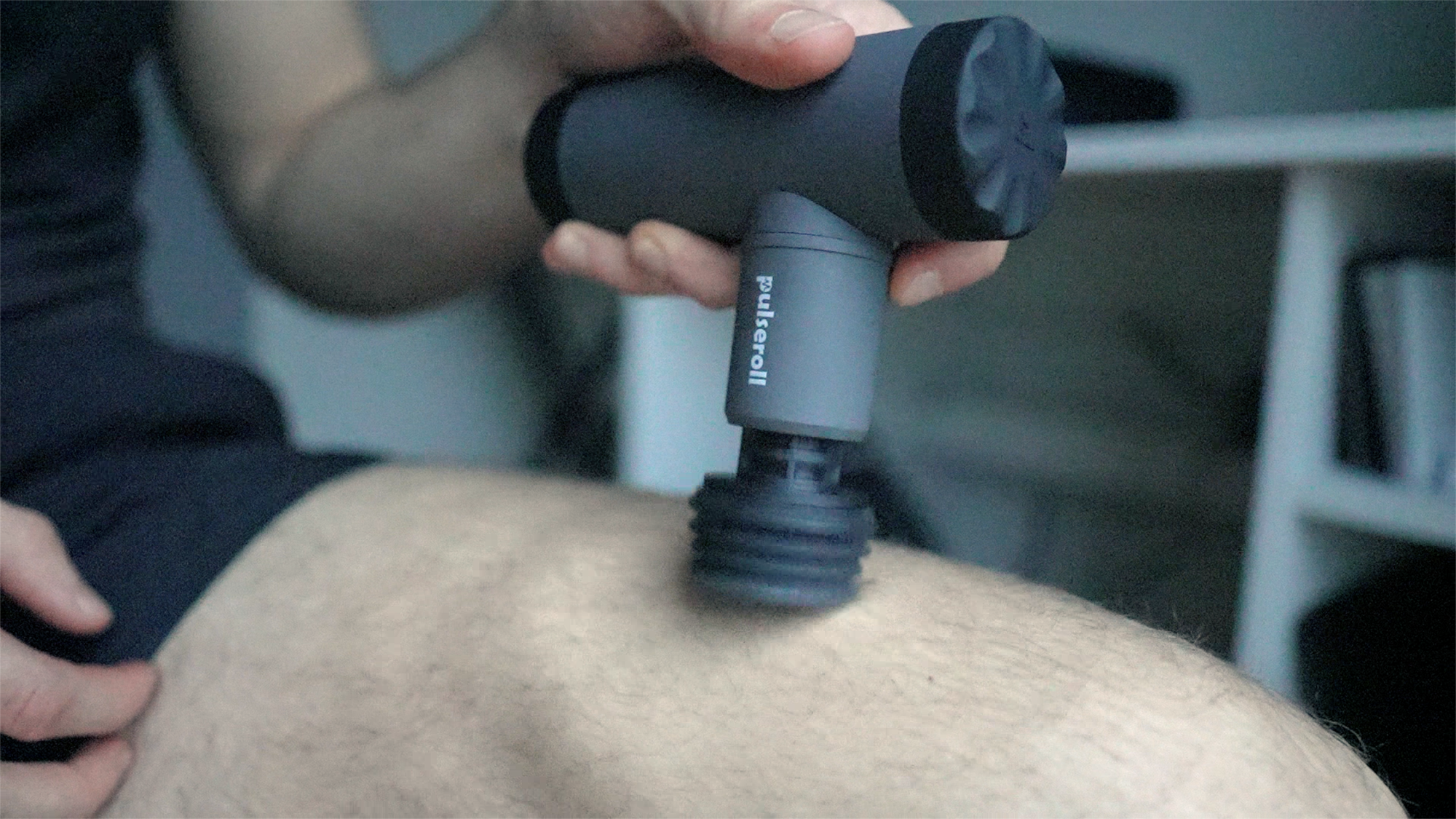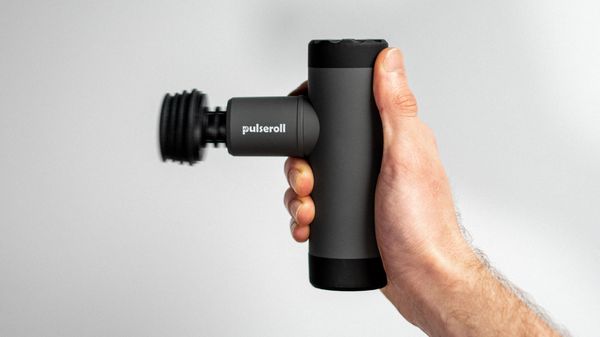Table of contents
Massage guns are everywhere. Is this a case of capitalism over competence, or are these effective tools for warm-ups and recovery? It worried me to hear Therabody say “basically science takes a long time to catch up.” That’s not a great start.
Let’s go through the claims of the companies, the evidence behind their products, my own personal experience, and some other free tools to improve your recovery.

The Claims
They claim that as you percuss your muscles (i.e. fire the gun into them), it helps to warm them up before exercise and improve their recovery after. How? They supposedly increase the blood supply to the muscles, increasing the clearance of waste and supply of resources. They also claim to increase flexibility and range of motion by releasing the tension within your muscles.
The Evidence
When I looked through the evidence, it was anaemic at best. Given that these things are literally everywhere, with some of my favourite athletes using them, I thought they’d have some robust scientific support. Here are a couple of studies I did find supporting warm-up and recovery.
Warm-up
A randomised controlled trial showed that by using a massage gun on the calf muscles, it increased dorsiflexion (sticking your toes up to the ceiling) by 5.4 degrees compared to not using it without losing any muscle contraction performance. They suggested that could make it a useful tool to use in your warm-ups because of that. The other thing to mention is that static stretching had the same effect on range of motion, although static stretching shouldn’t be used prior to exercise, and I’ll explain why in a future video.

Recovery
Another study took 40 subjects and compared a percussion gun with a foam roller, manual massage and mechanical vibration. They showed that percussion therapy improved muscle stiffness similar to massage therapy but achieved the same improvement in 2 minutes rather than 15 minutes for massage.
A promising start, but by no means is this research thorough or applicable to everybody given the small sample sizes, only measuring one joint and the participants all being young men. We need a wide variety of subjects and joints to be studied before we can draw clear conclusions.
The Risks
Rhabdomyolysis
Imagine this. You go cycling and then after your coach congratulating you on getting a great time, he uses a massage gun to help you recover. Over the next 3 days your muscles are hurting more than normal. You go to the bathroom to see tea-coloured urine. Time to go to hospital. When you get there, you’ve got multiple haematomas on your thighs and blood in your urine. This is a real case study. This woman had rhabdomyolysis where your muscles break down, the muscle proteins go through your blood to your kidneys; in an attempt to filter all this out, your kidney starts to break down leaving blood in your urine.
Vertebral Artery Dissection
Be incredibly careful using a massage gun around your neck. A 27-year-old presented with headache, neck pain, and dizziness after using a massage gun. She was found to have vertebral artery dissection, this case was documented here. Vertebral artery dissection can cause stroke so could have a life-changing impact on your life.
Be Aware, Not Scared
There are always horror stories with medications and interventions. People get rhabdo from intense exercise, but still do it. People get vertebral artery dissections from a chiropractor cracking their neck, but still go. It’s important to be aware of the risks, but also to be aware that these cases are rare.
My View
While these tools may not have a robust evidence base, that doesn’t mean they’re useless. It just means we should view them with a bit more scepticism. I found the massage gun very useful in my warm-up. It helped me to feel more mobile and I had a great leg session after using it.
Following the session, I used it daily for 5 days to see if it aided my recovery. Honestly, I didn't notice a difference.

Whether they’re worth the money is another question. I’ll put that down to you in your own personal situation, with the training you do and the recovery you want. However, not all recovery tools cost £300. There are a lot of free tools for recovery out there, tools with a real evidence-base. Tools that work.
Evidence-based Recovery Tools
Cold exposure
Studies have shown that exposing your muscles to cold temperatures, typically between 10°C to 15°C, approximately four hours after exercise can lead to a decrease in inflammation and soreness in your muscles. By constricting your blood vessels, you reduce the amount of blood flow to the muscle, decreasing the number of inflammatory cells which reduces inflammation, ultimately leading to faster recovery. The way I incorporate it into my daily routine is to turn my shower cold right at the end. I’ll be going into this in more detail in a future article so subscribe to the Healthy Habits newsletter to hear about that!
Sleep
Getting a great night’s sleep has a profound impact on your physical recovery, your neural processing of motor tasks (like improving your golf swing), and your mental and emotional recovery. If you're looking to improve your recovery, getting enough quality sleep should be one of your top priorities.
Nutrition
Proper nutrition is just as important as exercise when it comes to achieving your fitness goals. Ensuring that you eat a healthy, balanced diet can help your body recover more efficiently. This includes consuming enough protein to repair your muscles, and taking advantage of the anti-inflammatory effects of vitamin C and omega-3 fatty acids can aid in recovery.
Stay Connected
I post new videos on YouTube every other week, and Shorts 3 times a week. Please subscribe to support these videos, and I hope they can help you build healthy habits! If you aren't subscribed to the Healthy Habits Newsletter, consider joining to get actionable insights to help you live healthier.
Thank you for your time and interest,
Jack
